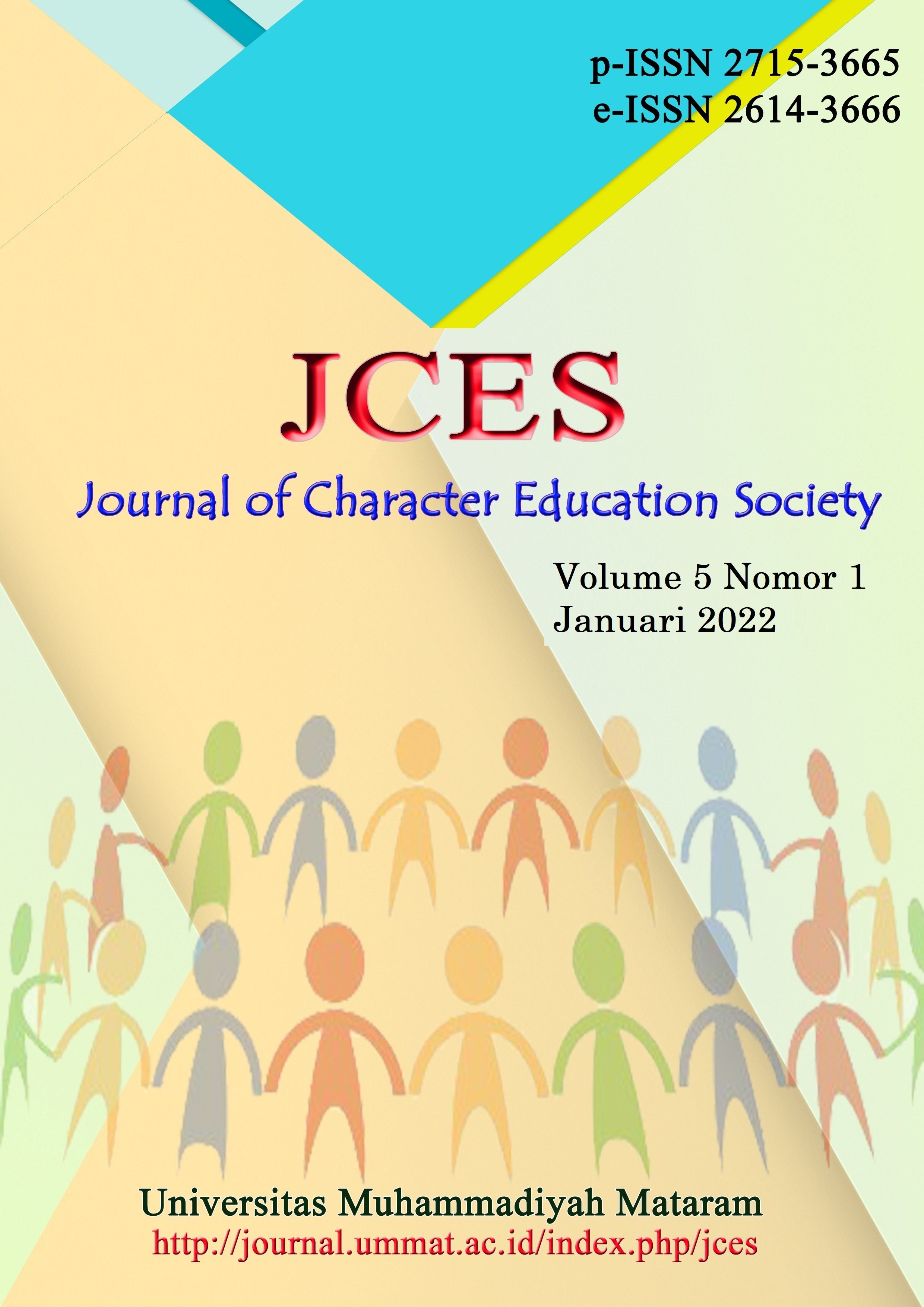A STRATEGY FOR DEVELOPING A DISTINCTIVE MOTIF FOR WEST KALIMANTAN ECO PRINT PRODUCTS USING THE POUNDING METHOD AND UTILIZING LOCAL PLANT DYES
DOI:
https://doi.org/10.31764/jces.v5i1.6215Keywords:
Eco Print, Pewarna Alami, Pounding.Abstract
Abstrak: Menurunnya kesadaran dan kerusakan lingkungan di era modern ini menyebabkan kurangnya wawasan tentang teknologi ramah lingkungan. Penggunaan pewarna tekstil dalam industri merugikan lingkungan dan kesehatan. Oleh karena itu, untuk menghindari dampak pencemaran lingkungan yang lebih signifikan, perlu digunakan teknologi pewarna alternatif yang ramah lingkungan. Produk Eco Print adalah solusi untuk masalah ekologi yang semakin memburuk. Oleh karena itu, kegiatan ini berfokus pada kelompok masyarakat Kampung Batik Kamboja yang terdiri dari masyarakat dan pengrajin batik di Kota Pontianak. Kegiatan ini merupakan sarana untuk meningkatkan produktivitas industri tekstil tanpa merusak ekologi lingkungan sekitar. Tahap awal tindakan adalah melakukan survei pendahuluan dengan melakukan wawancara dengan pengelola, memberikan edukasi cara membuat pewarna alami dengan teknik menumbuk, dan tahap terakhir adalah mengevaluasi pengetahuan peserta. Berdasarkan hasil kegiatan yang dilakukan, terjadi peningkatan pengetahuan dan keterampilan kelompok masyarakat tentang teknik tumbuk dan pemanfaatan eco print. Kegiatan ini menjadi pendorong bagi kelompok masyarakat Kampung Batik Kamboja untuk berinovasi dalam pembuatan seni tekstil batik dan mengembangkan jenis tumbuhan Kalimantan Barat yang dapat digunakan sebagai pewarna alami.
Abstract:Â The decreasing environmental damage and awareness in this modern era have caused less insight into environmentally friendly technologies. The use of textile dyes in the industry harms the environment and health. Therefore, to avoid a more significant impact on environmental pollution, it is necessary to use an alternative dye technology that is environmentally friendly. Eco Print Products are the solution to the ever-worsening ecological problems. Therefore, this activity focuses on the Kampung Batik Kamboja community group, consisting of the community and batik artisans in Pontianak City. This activity is a means to increase the productivity of the textile industry without damaging the ecology of the surrounding environment. The initial stage of the action is to conduct a preliminary survey by conducting interviews with managers, providing education on how to make natural dyes with the pounding technique, and the final stage is to evaluate participants' knowledge. Based on the results of the activities carried out, there is an increase in knowledge and skills for community groups about the pounding technique and the use of the eco print. This activity became the impetus for the Kampung Batik Kamboja community group to innovate in the manufacture of batik textile art and develop West Kalimantan plant species that can be used as natural dyes.
References
Aditya Dewantara, J., Efriani, E., Topo Jers, L. O., Heru Prasetiyo, A., & Sulistyarini, S. (2021). Village-Owned Enterprises (Bumdes) As a Collaborative Model Environmental Management. Jurnal Analisis Kebijakan Kehutanan, 18(1), 59–78. https://doi.org/10.20886/jakk.2021.18.1.59-78
Arifah, K., A, F., Cendana, C., DMC, I., MA, N., & A, P. (2019). Ec-Fash (Eco Culture Fashion) Inovasi kain Tenun Kombinasi Batik Ecoprint sebagai Upaya Melestarikan Cerita Rakyat Indonesia. Jurnal Ilmiah Penalaran Dan Penelitian Mahasiswa, 3(2), 62–73.
Efriani, E., Dewantara, J. A., Utami, D., & Listyaningrum, I. (2020). Dayak Tamambaloh Traditional Ecology. Jurnal Ilmu Lingkungan (Environmental Sciences Bulletin), 18(3), 503–514. https://doi.org/10.14710/jil.18.3.503-514
Geetha, B., & Sumathy, V. (2013). Extraction of Natural Dyes from Plants. International Journal of Chemistry and Pharmaceutical Sciences, 1(8), 502–509.
Mardiana, T., Warsiki, A. Y. N., & Heriningsih, S. (2020). Community Development Training with Eco-print Training Wukirsari Village, Sleman District, Indonesia. International Journal of Computer Networks and Communications Security, 8(4), 32–36. https://doi.org/10.47277/ijcncs/8(4)1
Marsudi. (2019). Uji Coba Warna Daun Sirih Merah dengan Teknik Pounding dan Steam. Jurnal Seni Rupa, 7(2), 73–80.
Muflihati, Wahdina, Kartikawati, S., & Wulandari, R. (2019). Tumbuhan Pewarna Alami untuk Tenun Tradisional di Kabupaten Sintang dan Kabupaten Sambas Kalimantan Barat. Media Konservasi, 24(3), 225–236. https://doi.org/https://doi.org/10.29244/medkon.24.3.225-236
Prapti, M. S., & Trimeiningrum, E. (2007). Pengembangan Ketrampilan Ecoprint sebagai Alternatif Pemberdayaan Kelompok Dasa Wisma Melati 2 Ungaran. Proseding Seminar Nasional Hasil Pengabdian Kepada Masyarakat, 4(1), 544–548.
Rupa, J. S., Octariza, S., Mutmainah, S., Rupa, S., Surabaya, U. N., Rupa, S., & Surabaya, U. N. (2021). TEKNIK POUNDING PADA ANAK SANGGAR. 9(2), 308–317.
Downloads
Published
Issue
Section
License
Authors who publish articles in JCES (Journal of Character Education Society) agree to the following terms:
- Authors retain copyright of the article and grant the journal right of first publication with the work simultaneously licensed under a CC-BY-SA or The Creative Commons Attribution–ShareAlike License.
- Authors are able to enter into separate, additional contractual arrangements for the non-exclusive distribution of the journal's published version of the work (e.g., post it to an institutional repository or publish it in a book), with an acknowledgment of its initial publication in this journal.
- Authors are permitted and encouraged to post their work online (e.g., in institutional repositories or on their website) prior to and during the submission process, as it can lead to productive exchanges, as well as earlier and greater citation of published work (See The Effect of Open Access).

